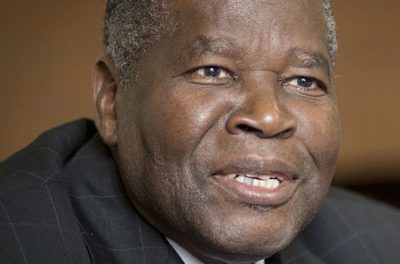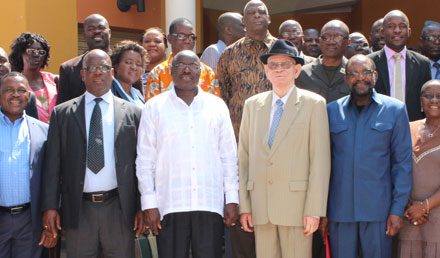
Rössing eyes longrange conveyors

The RopeCon Conveyor system crossing the Nile in Sudan.
After successful exploration, Rössing is now considering mining the Z20 area which falls within Rössing’s mining license area. In order to access the Z20 ore body, an infrastructure corridor would need to be established linking the Z20 site to the existing Rössing mine. The infrastructure corridor would facilitate the transport of crushed ore to the processing facilities across the Khan River at the existing Rössing mine.
At this stage the preferred option to transport the ore from the Z20 site to Rössing’s facilities is an overland cable conveyor system. The RopeCon system was the preferred choice above trucking by road, or conveying through a tunnel or pumping ore slurry. The RopeCon system is energy efficient, does not create disturbing noise, contains the material better than other transport systems and can be run at low cost.
Explaining the unique technology and design for the proposed mining of the Z20 uranium deposit , Hermann Frühstück of Doppelmayr Transport Technology in Germany said the conveyor will run at a speed of 4,64m/s (16.74km/h) and have the capacity to carry 2250t/hour. Unique features of the design for this project is that the conveying system will be tailor made for the rugged terrain. It will have a small environmental foot print with only 33 towers to support the 13 km overland conveyor system. It has low noise levels and is enclosed to prevent ore from falling off.
Construction will be done by cranes and helicopters. Regular inspections will ensure the safe and efficient operation of the system. A Maintenance Manual supplied by Doppelmayr will guarantee, together with trained local operators, the system’s efficiency.
Besides the conveyor crossing the Khan River, the Z20 ore body is also lying near to the Welwitschia Plains. In response to questions regarding the increased visibility from lookout points due to the elevated nature of the design, Frühstück indicated that the dimensions of the conveyer are 1m x 2m and that it will be possible to be constructed in colours which blend into the surrounding area. He added that 60% of Aerial Ropeways of a similar design are erected and located within National Parks.
Currently the longest RopeCon Conveyer is built in Argentina which is 8, 5 km long. Adding to the design is Doppelmayr’s expertise in conditions similar to the Khan River location. RopeCon built a system in Sudan where the Nile is crossed under similar desert conditions, and with high wind speeds. Explaining the challenges of this specific project, Frühstück said this projects is not extraordinary to them. “There are no challenges; this is a normal business for Doppelmayr to install equipment in difficult terrain and weather conditions.”
Public and focus groups attending the meetings on 23 and 24 October as part of Rössing’s Social and Environmental Impact Assessment were also informed that a 14 km road would have to be constructed if the project gets all clearances and is found to be economically viable. The road from the Rössing mine site would follow existing tracks and cross the Kahn River where a bridge would be constructed to allow mine traffic to travel to the Z20 mine site. A water pipeline and an overhead electricity line are also to be constructed along the road.
The purpose of the Social and Environmental Impact Assessment (SEIA) process is to identify and evaluate feasibility alternatives and potential impacts, and to identify potential measures to avoid or reduce negative impact and enhance positive impact if the project is cleared.













































